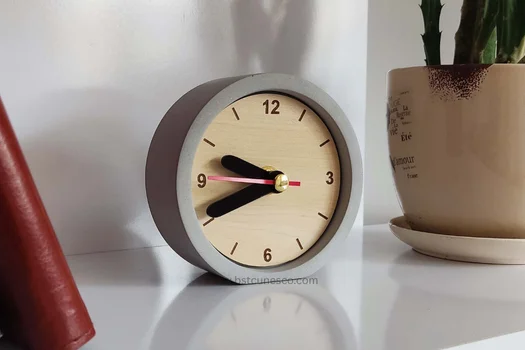Why do we use the decimal number system (base 10)?
Today, the decimal number system (base 10) is accepted as the global standard due to its ease of counting with the fingers. However, in the past, ancient civilizations used different number systems such as base 12 and base 60 for mathematical calculations and time measurement. These systems were formed based on the physical structure of the human body and astronomical needs.
In this article, we will examine the history of number systems and their impact on time measurement. We will also analyze the reasons for the use of bases 12 and 60 in modern clocks and the role of ancient civilizations such as the Egyptians and Babylonians in the formation of these concepts.
Ancient Number Systems: Why Base 12 and 60?
The Base 12 (Dodecahedron) Number System and Its Relationship to the Fingers
The Egyptians and Babylonians used the base 12 number system for counting. The reason for this choice was the structure of the fingers:
– Each hand (except the thumb) has 3 joints.
– Using the thumb as a pointer, one can count to 12.
– This method became the basis for the 12-hour division of day and night.
The base 60 (sixty) number system and its applications
The Babylonians invented the base 60 system for astronomical calculations and timekeeping. The advantages of this system are:
– High divisibility: the number 60 is divisible by the numbers 2, 3, 4, 5, 6, 10, 12, 15, 20 and 30.
– Application in astronomy: The division of the circle into 360 degrees (60×6) and the division of the hour into 60 minutes and 60 seconds originated from this system.
Ancient Egyptians and the invention of the clock
Sundials and the division of the day into 12 parts
The Egyptians were the first to divide the day into 24 hours:
– At first, they divided the day into 10 parts.
– They considered 1 hour for sunrise and 1 hour for sunset.
– Later, with the invention of the shadow clock (T-shaped bar), the day was divided into 12 equal parts.
Measuring time at night with the stars
Since sundials were not effective at night, the Egyptians used 36 special stars (decans) to measure time:
– On each night, 12 stars were visible.
– They calculated time using star calendars.
Later developments in time measurement
Introduction of equal hours by the Greeks
– Greek astronomers such as Hipparchus proposed dividing a day into 24 equal hours.
– However, ordinary people used seasonal hours (of variable length) for centuries.
The influence of the Babylonian system on the division of minutes and seconds
Greek astronomers used the Babylonian sexagesimal system to divide time:
– 1 hour = 60 minutes
– 1 minute = 60 seconds
This system was used in astronomical calculations due to its high accuracy.
Return to Decimal in the Modern Era
The Need for Greater Accuracy: Milliseconds, Microseconds, and Nanoseconds
As technology advanced, the base 10 system was used to measure time more accurately:
– 1 second = 1000 milliseconds
– 1 millisecond = 1000 microseconds
– 1 microsecond = 1000 nanoseconds
Applications of the Decimal System in Modern Technology
– GPS and Computer Network Synchronization
– High-Frequency Trading
– Scientific and Engineering Data Processing
Conclusion: The Legacy of Ancient Civilizations in Today’s Life
Ancient number systems, such as base 12 and 60, are still used in modern clocks, astronomical calculations, and geometry. At the same time, the decimal system is used in modern technology due to its simplicity and high accuracy.
Did you know?
– The number 360 degrees of a circle originated from the Babylonian system.
– Today’s digital watches use a sexagesimal system to display minutes and seconds.
These amazing ideas show how ancient civilizations have influenced our modern lives.
Resources:

